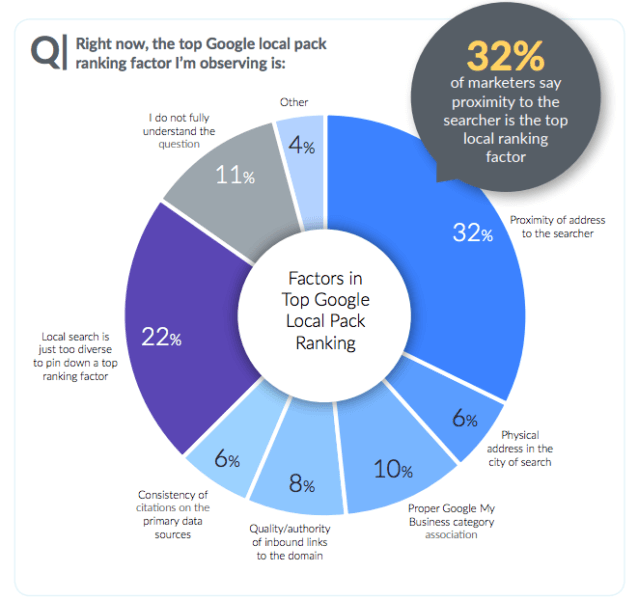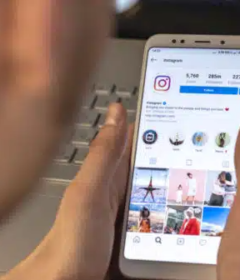Moz ‘State of Local’ report shows confusion, fragmentation in local SEO efforts

90 percent of respondents believe Google’s focus on proximity “frequently or sometimes” harms search results quality.
On the heels of its Local Ranking Factors survey, Moz has released a “State of Local SEO” report. The findings are based on the responses of roughly 1,400 local marketers, segmented by marketer type (agency vs. in-house) and company size.
Confusion and fragmentation of effort. The report contains a lot of interesting findings about marketers’ local SEO knowledge and practices. In general, however, the report conveys a sense of fragmentation and a high degree of confusion among those pursuing local SEO.
Separate from its formal local search rankings study cited above, the survey asked this population about what factors influenced local search rankings. Proximity was cited as the top factor by 32 percent. However, the next highest response said there was no top ranking factor and 11 percent didn’t understand the question.
Proximity harms results quality and other key findings. Below is a selection of the survey’s key findings:
- 90 percent of respondents believe that Google’s focus on proximity frequently or sometimes harms search results quality.
- 64 percent of marketers now see Google as the new “homepage” for local businesses.
- 66 percent of clients and agencies care more about conversions and revenue than rankings by themselves.
- 65 percent of marketers use between 2-5 local SEO tools and software (Google tools dominate).
- 43 percent of organizations have only one or no full-time SEO practitioners on staff.
- 35 percent of local marketers have no link building strategy at all.
The chart below reflects the diffusion of effort that goes into local SEO and that there’s no dominant tactic or area of focus.
The survey also found that more than half of marketers (55 percent) have confidence that their sites are mobile-ready, while 45 percent are not confident they’re ready. Finally, almost 70 percent of companies in the survey were also running paid advertising on Google.
There’s a good deal more data and discussion in the report, which I haven’t covered. The full report can be accessed here (after registration).
Why marketers should care. A large percentage of what people do on their mobile phones is about finding products, services or entertainment in the offline world. As we saw this past weekend, mobile devices drove more retail site traffic than the desktop. And regardless of the official percentage of search that carries a “local intent” — Google currently says the number is 30 percent — the company is increasingly focused on delivering locally relevant content to mobile users in a way that maintains engagement with Google properties.
Local search is not a niche phenomenon, it’s nearly a universal concern. Indeed, unless you sell exclusively online, all brands, retailers and service providers need to focus more effort and energy on showing up for local queries — especially in a mobile context.



